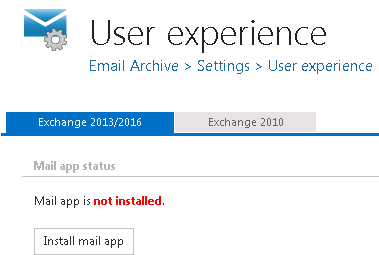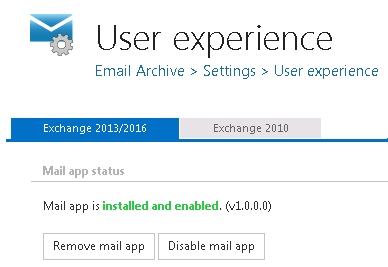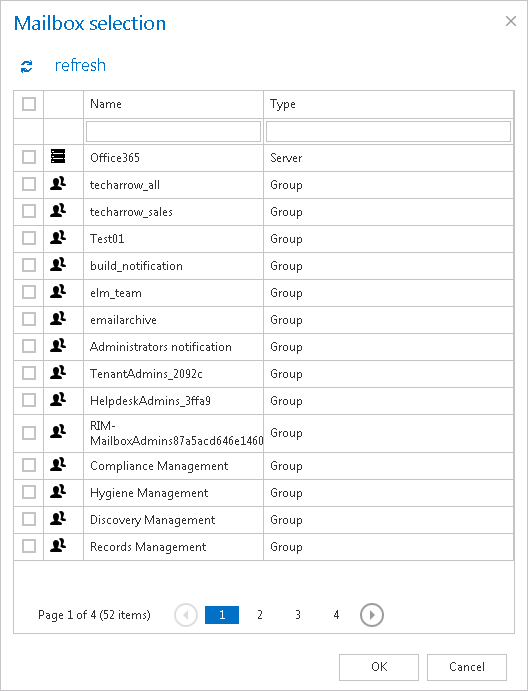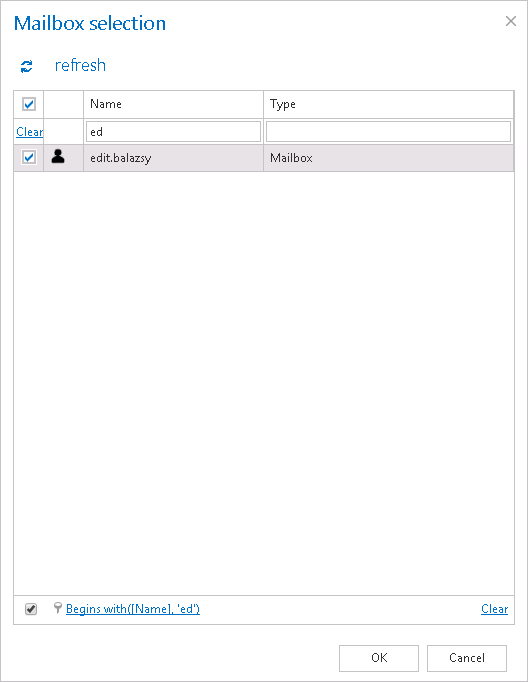11.10.1.Deployment in contentACCESS Central Administration
- Exchange 2013 or later version
- MS Outlook 2013 or later desktop version or OWA.
- Proxy installed over HTTPS connection (refer to section “Installing the Proxy web services“.
- Default shortcut and a default retention must be set in contentACCESS Central Administration.
- On the System page (System tab => Services group => System button => External accessibility settings) a HTTPS alias must be configured.
- Role “Org Custom Apps” must be assigned for the EWS user on the Email Archive System settings page, in section EWS settings. This role enables an administrator to install and manage custom apps for the organization (read more about the role here).
The administrator is required do the following configurations for manual email archiving. He has to
- configure a shortcut that Mail app will use and set this shortcut as default (refer to section “Shortcuts in email archiving”);
- configure a retention that Mail app will use and set this retention as default (refer to section “Retentions”);
- install the Proxy server with HTTPS connection (refer to section “Installing the Proxy web services”);
- configure HTTPS based alias under External accessibility settings;
- install Mail app (section Mail app status);
- configure Mail app (section Mail app configuration)
- Activate Mail app for the desired mailboxes (section Activate mail app for).
To install Mail app, navigate to Email Archive ⇒ Settings ⇒ User experience on the ribbon, and click on Exchange 2013/2016 tab on the User experience page:

Mail app status
In section Mail app status you may install or remove mail app on the Exchange. To install it, click Install mail app button and wait until the installation process finishes (Screenshot A). With clicking on option Remove mail app you can uninstall this application from the Exchange; with clicking on Disable mail app the application can be globally disabled (turned off) for all Exchange groups/mailboxes (Screenshot B).


Mail app configuration
Once mail app is installed, you can set the mail app functionalities – manual archive and/or manual restore – to be used. This configuration will be applied globally for every mailbox. If manual archive and/or manual restore functionality is not allowed, the mailbox user can see a notification in the footer area of the mailapp and the button related to the disabled functionality is hidden.
This configuration is very useful e.g. if you want to allow manual restore for the users, but want to restrict manual archiving directly from the user mailboxes.
Activate mail app for Exchange servers/groups/mailboxes: The application is available for the user (in his mailbox) only in case if it’s activated for him. Once Mail app is installed and the functionality is configured, you can activate it for the mailboxes that will use this application. If Mail app is disabled, the activation settings are unavailable.
Scroll down to section “Activate mail app for”. Use option “Activate for everyone” if the application should be activated for every user. To activate it only for a given Exchange group/Exchange mailbox, click “activate for mailbox” and select the desired mailbox(es)/group(s) from the list of the Mailbox selection dialog. In this use case (refer to the pictures below) we have activated it for one user only.


It is also possible to deactivate the application for all configured Exchange groups/mailboxes (option “Deactivate for everyone”).

